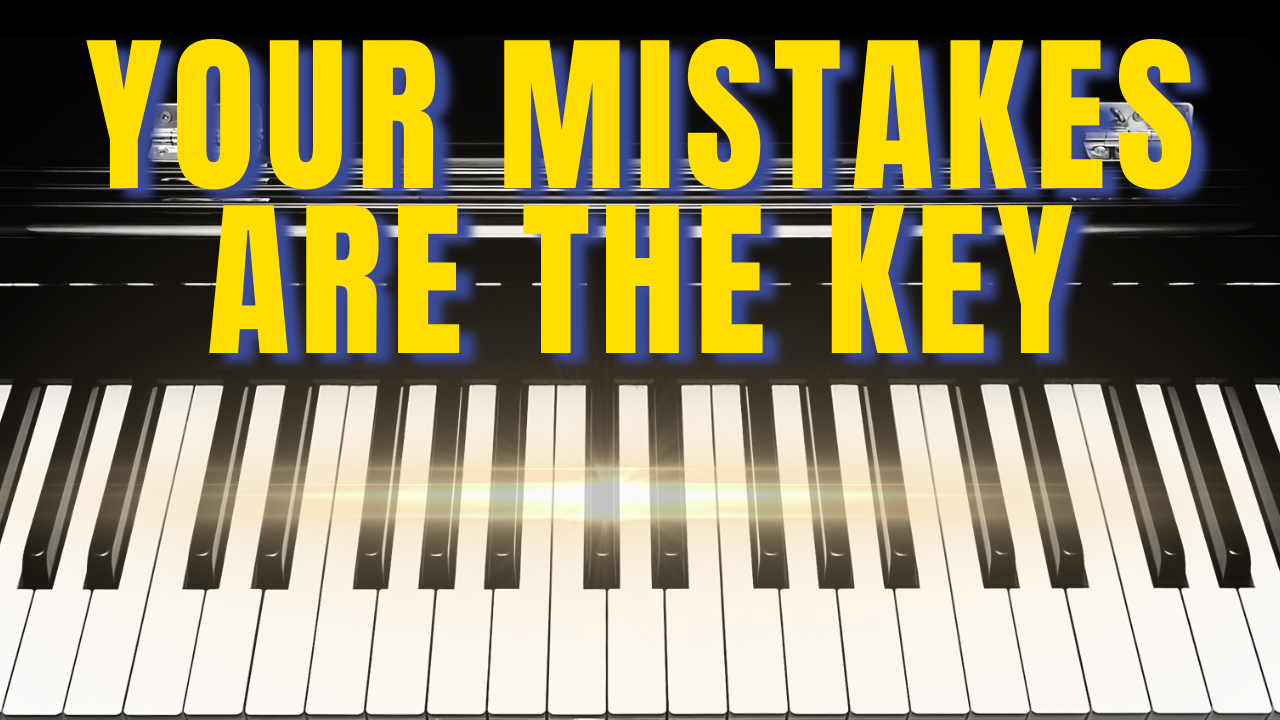The Secret to Getting Better at Piano? Fail More.
Mar 10, 2025
***Watch the YouTube video HERE***
→ Why Mistakes Are the Key to Progress
If you’re serious about improving at piano, there’s one thing you need to do more often—fail. A lot.
That might sound counterintuitive. After all, no one wants to make mistakes. But if you’re always playing it safe, avoiding errors at all costs, you’re actually holding yourself back.
When you’re too focused on not messing up, you play cautiously, hesitantly. You hover over the keys instead of committing to your movements. But real progress happens when you lean into mistakes, learn from them, and use them as a tool for growth.
→ Why Embracing Failure Makes You a Better Pianist
Changing how you think about mistakes can completely transform your practice. Here’s why:
🎵 Mistakes are normal. Every pianist—yes, even professionals—makes mistakes in practice. The difference is that they don’t fear them; they use them.
🎵 Mistakes show you where to focus. A missed note, uneven rhythm, or clumsy fingering isn’t a failure—it’s feedback. It tells you exactly where you need to improve.
🎵 A “perfect” practice isn’t really practice. If you’re only repeating what you can already do, you’re not pushing yourself. Mistakes mean you’re working on something just beyond your current skill level, which is exactly where you need to be to grow.
→ How to Train Your Ear to Catch (and Fix) Mistakes
One of the biggest struggles for self-taught pianists is hearing their own mistakes. If you don’t notice an error, you can’t fix it. Here’s how to sharpen your ears and make your practice more effective:
1️⃣ Record Yourself. Don’t worry about perfection—just play through your piece confidently.
2️⃣ Listen with Intent. Grab your sheet music and a pencil. As you listen to the recording, jot down any mistakes or areas that feel off. Keep it objective:
- "Measure 5: Wrong note on beat 3"
- "Measure 12: Rushed transition between chords"
3️⃣ Find the Root Cause. Ask yourself: Was it a reading mistake? A technical issue? A lack of muscle memory? Identifying why the mistake happened helps you fix it more effectively.
4️⃣ Target Problem Areas. Break down tricky sections and apply deliberate practice techniques—slow repetition, hands-separately practice, or focusing on rhythm.
5️⃣ Repeat the Process. As you improve, record yourself again. You’ll notice new details each time, keeping your progress on track.
→ Let Go of Fear and Play Boldly
Many pianists hold back because they’re afraid of mistakes. But if you watch professionals play, you’ll see they move confidently, expressively—even when they’re still learning a piece.
So instead of playing timidly, take up space at the piano. Allow yourself to make mistakes. Welcome them. Because every wrong note is simply a step toward playing better.
The next time you sit down to practice, don’t aim for perfection—aim for progress. Find your mistakes, work through them, and watch your playing transform.
Happy practicing!

